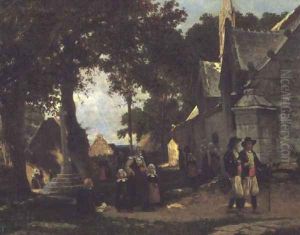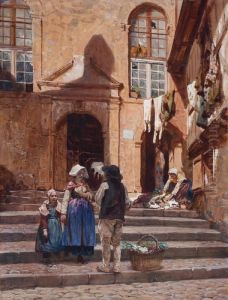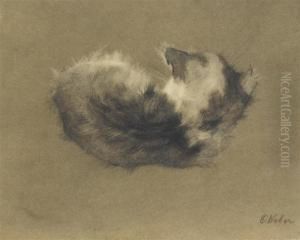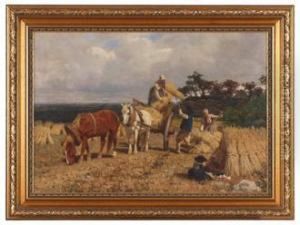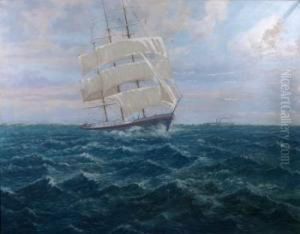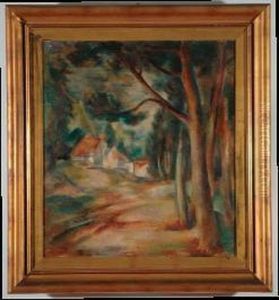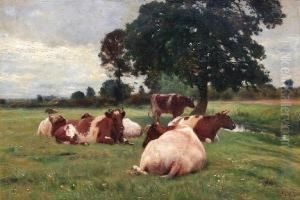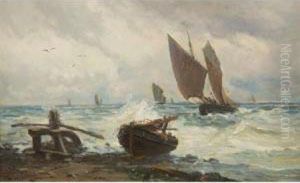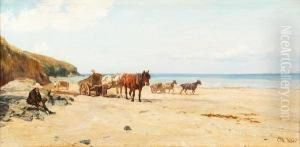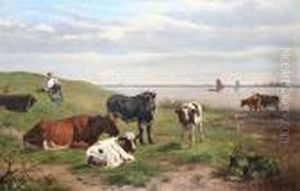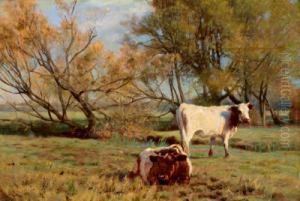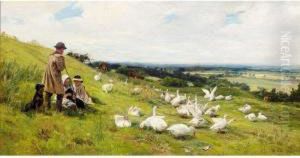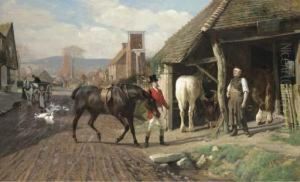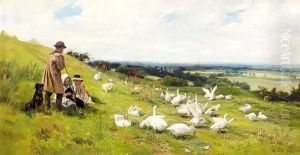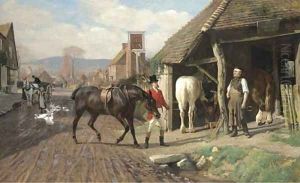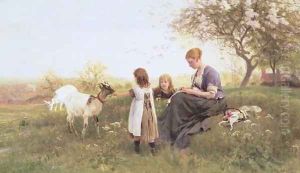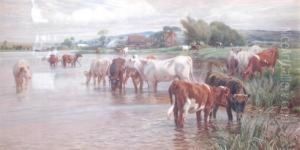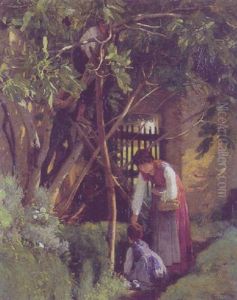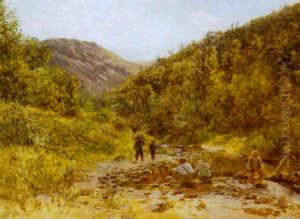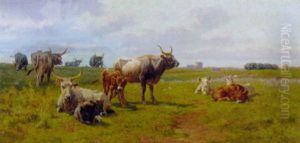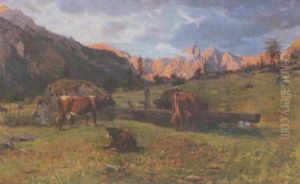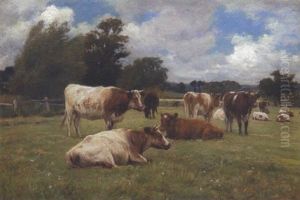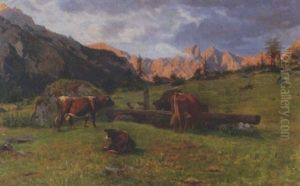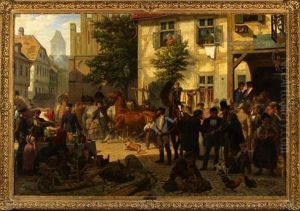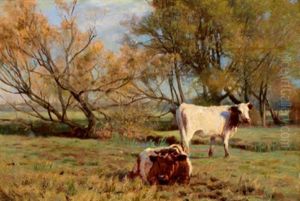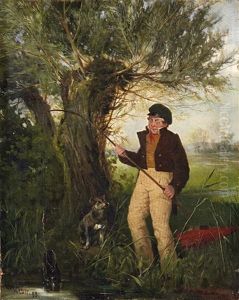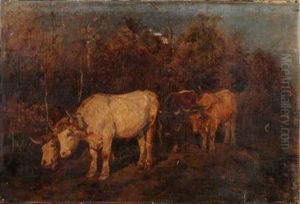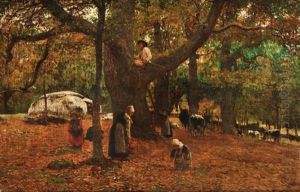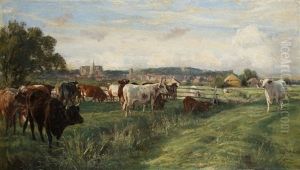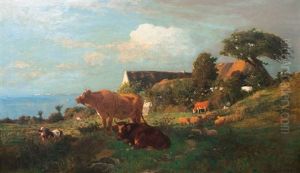Otto Weber Paintings
Otto Weber was a German landscape painter associated with the Barbizon School, a group of artists working in the village of Barbizon in France who focused on realistic and plein air painting. Born on November 28, 1832, in Erfurt, Prussia (now Germany), Weber developed an interest in art at a young age and pursued his passion despite initially following a commercial career.
He studied at the Academy of Fine Arts in Karlsruhe under the guidance of Johann Wilhelm Schirmer, who was a significant influence on his early work. Schirmer was known for his landscape paintings, and this early exposure helped shape Weber's artistic direction. After his studies, Weber traveled extensively throughout Europe, drawing inspiration from the various landscapes he encountered.
In the 1850s, Otto Weber moved to Paris, where he became acquainted with the Barbizon School painters, including Jean-François Millet, Théodore Rousseau, and Charles-François Daubigny. The Barbizon artists were known for their revolutionary approach to landscape painting, emphasizing naturalism and the effects of light and atmosphere, which resonated with Weber's artistic sensibilities.
Weber's style is characterized by its detailed observation of nature, subtle color palette, and serene compositions. He often depicted forest scenes, rural landscapes, and the everyday life of peasants, imbuing his paintings with a sense of tranquility and timelessness. Weber's works reflect his admiration for the natural world and his dedication to capturing its fleeting moments.
Although Weber was German by birth, his association with the Barbizon School and his adoption of their techniques and themes integrated him into the French art scene. His work was well received, and he participated in several exhibitions, gaining recognition and accolades for his contributions to landscape painting.
Weber's health began to decline in the late 1870s, and he eventually passed away on January 24, 1888, in Berlin. Despite his relatively short life, Otto Weber left behind a significant body of work that continues to be appreciated for its contribution to the landscape genre and its role in the development of plein air painting. His paintings can be found in various art collections and museums, where they continue to inspire admiration for their quiet beauty and technical proficiency.
